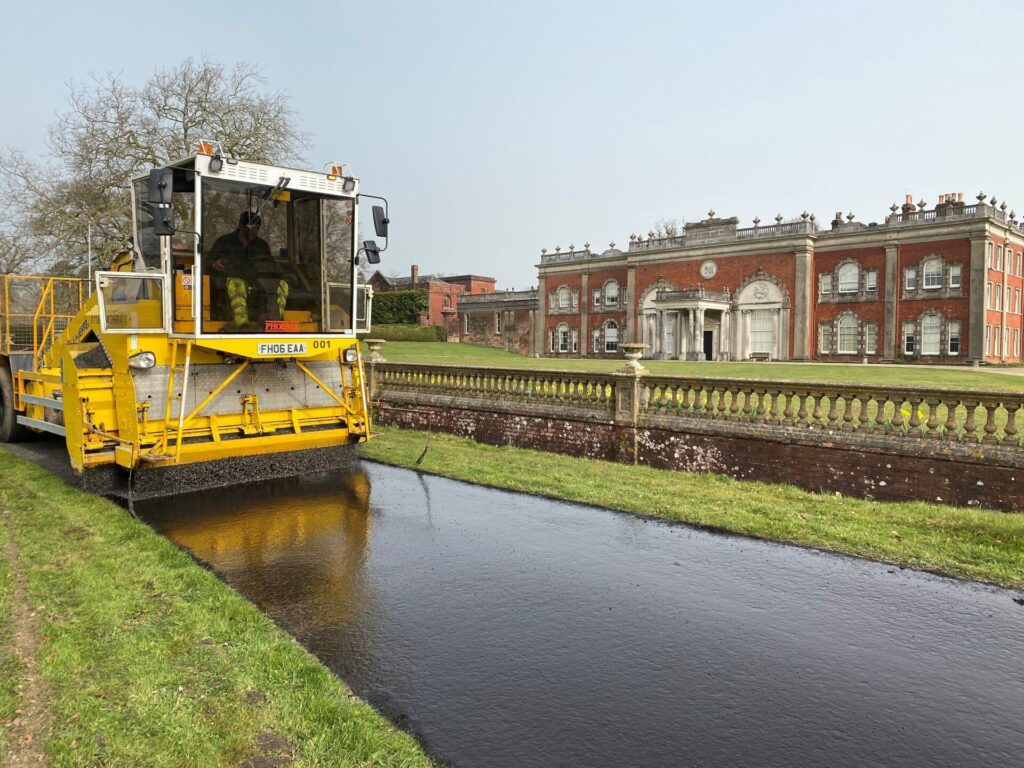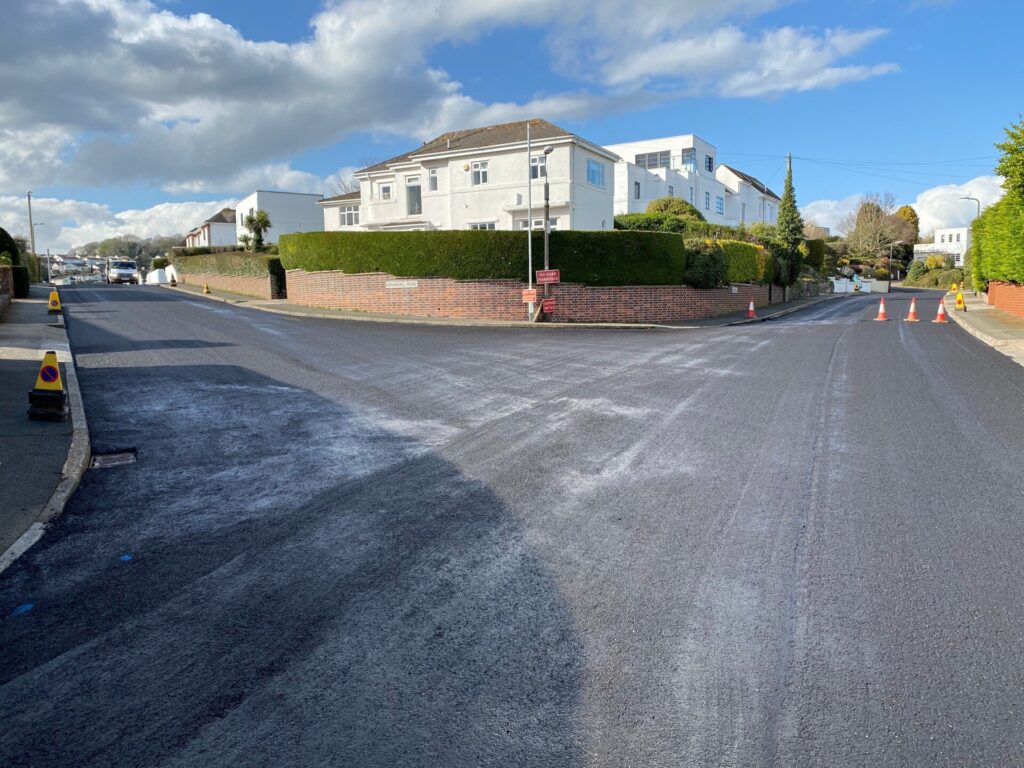Like all aspects of property ownership, an asphalt surface needs maintenance and upkeep – and has a usable lifespan. Whether you are responsible for an asphalt road, car park, or pavement, road surfacing is a sizeable investment.
Whilst a well-maintained asphalt surface can last twenty years or more, this depends on various factors, ranging from regular wear and tear to damage to local climate specificities. If early signs of damage are ignored, major repair work or even replacement can ensue, so it really is worth keeping abreast of any maintenance requirements.
To stay attractive, easy to use, and safe, on top of minimising these costly forays into sizeable repair and replacement, you need to be able to recognise the signs that indicate when your asphalt is in need of repair.
This Hazel & Jefferies blog runs through the primary signs that your asphalt needs professional maintenance, repair, and replacement.
Surface cracks are the earliest signs of damage to your asphalt surface. These hairline cracks, if caught early, are very easy to repair, requiring only filling. Shallow surface defects often cover a large amount of the surface.
If the cracks become more profound, however, they may require full-depth reclamation work across the affected area. Major cracks are sometimes called ‘alligator cracks’ due to their resemblance to reptilian skin – cracks that spread and proliferate across the asphalt’s surface. Contact Hazel & Jefferies if you need a professional assessment of the state of cracks in your surface.
Potholes are a significant indication that you need assessment by a professional. They pose a safety hazard for vehicles and pedestrians utilising the surface, but they also create opportunities for further damage, as holes can collect rain and water. This moisture weakens the road’s foundations, causing plenty of opportunity for further cracking and damage. Deep or multiple potholes can be an indication that your solution might need to be more profound than a simple patch-up job.
If your asphalt is showing signs of buckling or warping, where the surface appears less level or wavy, can suggest that you have a compromised, or insufficient, base – or that the surface has been through heavy usage. Sometimes the surface can be levelled up with fresh asphalt, and sometimes the remedial works will require replacing both the asphalt and its base. Asphalt usually sits on a base of crushed stone. Sinkage happens when this base begins to erode and can be especially noticeable near structures, as the problem often stems from the building’s downspouts depositing too much water for the surface to handle. Remedying this issue with gutter repair can often make a big impact.
Poor drainage is a problem from the get-go – any experienced contractor will want to inspect the drainage solutions of your planned area before laying any asphalt surface. That’s because ant moisture can seep into the surface, damaging the binding agents in the asphalt. Lingering moisture can become a problem with cracks, potholes, and other damage, but can also just result from poor drainage planning prior to laying. You want to avoid any rainwater or melting ice being encouraged to linger on the surface wherever possible.
Your initially black asphalt is likely to turn grey with frequent use, time, and sunlight. Fading is somewhat inevitable, but its effects can be minimised through the use of seal coating. This is usually recommended anything from annually to every three years, depending on the usage levels your asphalt goes through. Older pavement is grey, and is more susceptible to problems such as cracking, because of its brittleness, so as well as remedying aesthetic concerns, a seal coating can help you to avoid larger problems. The state of your asphalt’s colour, therefore, tells you to keep an eye on the surface.
If your surface hasn’t been properly finished with concrete gutters or kerbs at the edges, these edges will soon begin to crumble. The scattered debris can be a problem unto itself, causing vehicle damage and more damage to the surface, so remedying the situation as soon as possible is ideal. A contractor can remove any damaged areas and renew them.
Some cracks are quite slow to alter, and pose no immediate concern. But if you notice your surface has a crack that is widening or is more than a quarter of an inch wide, you’ll need to call in a contractor. Filling any cracks like these early on rather than waiting for them to worsen can help improve your surface’s overall lifespan.
Some chemicals, including car fluids like motor oil and industrial solvents, have compounds within them that eat away at asphalt’s binding agent. Talk to a contractor whenever you notice a spill or stain, to work out whether quick action can help you to avoid any damage. Not only are stains unsightly, but such chemical leakages can seep deep into the surface’s under-structure and then spread outward until they’re addressed – meaning that they affect an awful lot more of the surface than if they were cleaned up quickly.
Repairing surface issues with your asphalt is so much cheaper than replacing the whole lot. As a rule, you can often get away with either repairing or resurfacing your asphalt if the damage is only surface-level. It can either be fixed by patching areas or by undertaking a full resurface. If the damage has penetrated more deeply though, extending into the asphalt’s foundations and substructure and compromising the asphalt’s structural integrity, the entire surface will then need replacing.
Have you noticed any of the above signs of asphalt deterioration on your asphalt surface? Are some of these a cause for concern? If your answer is yes, get in touch with skilled surface dressing contractors Hazel & Jefferies today, to schedule in any necessary repairs and set your mind at ease.

